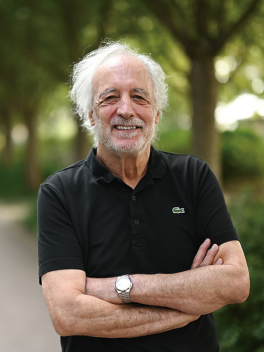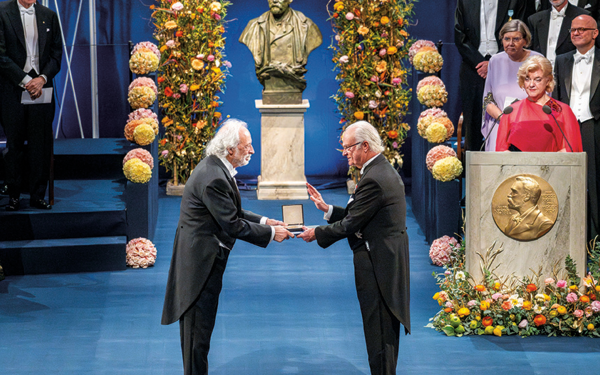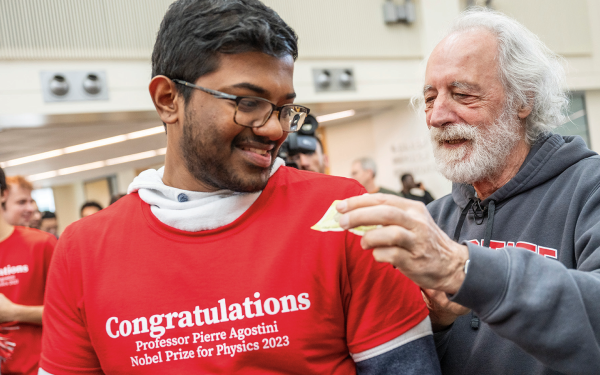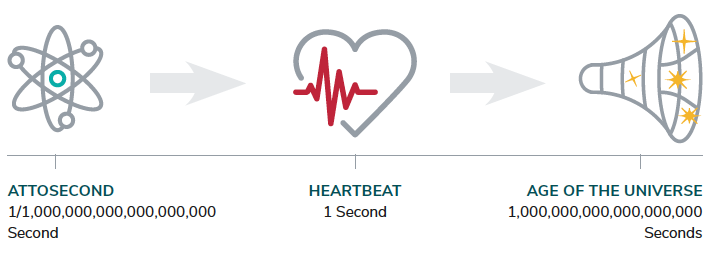Christina Dierkes
Content Strategist
dierkes.10@osu.edu
“Go your way. If you have something in your mind, then try to push it until it makes sense physically.”
- Pierre Agostini

“I wanted to do math and they completely discouraged me, saying that’s too difficult, I would never make it. Alright, so I took physics, which was closest to mind.”
That’s not something you would expect to hear from the 2023 Nobel Prize winner in physics, but for Professor Emeritus Pierre Agostini, it was the start of a long career that culminated in one of science’s highest honors last year.
Agostini, Ferenc Krausz and Anne L’Huillier received the award “for experimental methods that generate attosecond pulses of light for the study of electron dynamics in matter.” Because their initial work in this area was published around 2004, the recognition came as a bit of a surprise to the research team.
“It had been in the back of our minds in 2004, but since then we completely forgot,” Agostini laughed. “You can’t spend all your years waiting for the Nobel Prize, so it was good news, but unexpected.”
For the ceremony in Stockholm, Agostini was joined by his family as well as a group of Ohio State colleagues and former students, who not only attended the ceremony in person or via a live feed, but also extended the celebration with events around the Swedish capital.
“It was irreal, completely irreal,” Agostini said. “I was very happy going to Stockholm and being on stage. It was tiring, but … when I got the medal from the king, I was really sort of emotional.”
When asked what’s next for him and his research, Agostini’s eyes sparkled with laughter: “after attoseconds, there are zeptoseconds, so there is another prize,” he joked.

Pierre Agostini (left) is presented with the 2023 Nobel Prize in Physics by King Carl XVI Gustaf of Sweden during the Nobel awards ceremony at the Concert Hall in Stockholm, Sweden on December 10, 2023.
Photo: © Nobel Prize Outreach, Nanaka Adach

Nobel Prize winner Pierre Agostini signed t-shirts for students at a celebration in Ohio State’s Physics Research Building in March 2024.

Pierre Agostini (left) is presented with the 2023 Nobel Prize in Physics by King Carl XVI Gustaf of Sweden during the Nobel awards ceremony at the Concert Hall in Stockholm, Sweden on December 10, 2023.
Photo: © Nobel Prize Outreach, Nanaka Adach

Nobel Prize winner Pierre Agostini signed t-shirts for students at a celebration in Ohio State’s Physics Research Building in March 2024.
Just how small is an attosecond?
Just how small is an attosecond, the unit of time the Nobel-winning team was able to observe? An attosecond is one quintillionth of a second – that’s 18 zeroes. “It’s very small. It’s to the second, exactly the same thing as the second to the age of the universe,” Agostini explained.

Ohio State Department of Physics Nobel Laureates
1982
Ken Wilson, faculty member, for “theory for critical phenomena in connection with phase transitions.”
1983
William Fowler, alumnus, for “theoretical and experimental studies of the nuclear reactions of importance in the formation of the chemical elements in the universe.”
2023
Pierre Agostini, Professor Emeritus, for “experimental methods that generate attosecond pulses of light for the study of electron dynamics in matter.”
